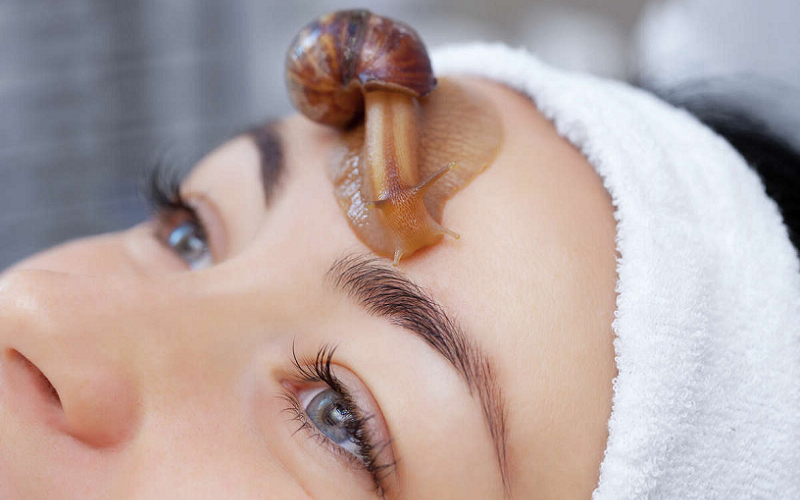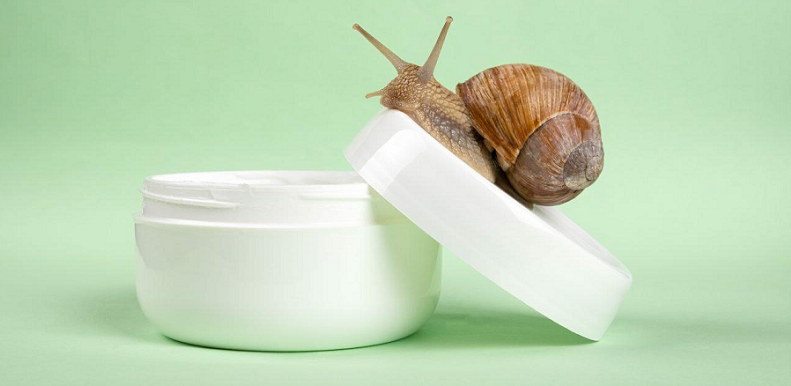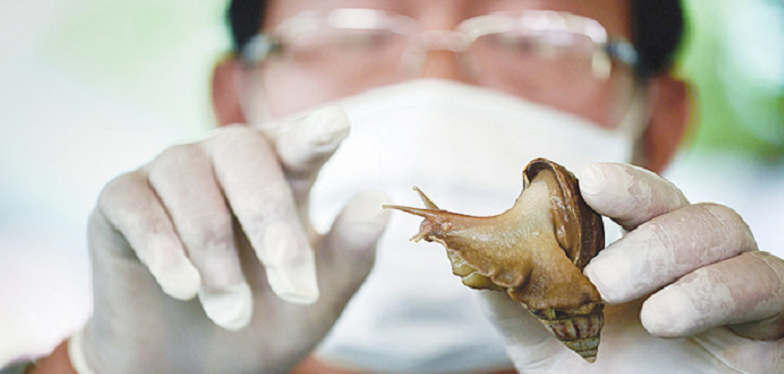
In a world constantly evolving with innovative skincare ingredients, there’s one that has been quietly working its magic for centuries: snail mucin. Imagine unearthing a beauty secret that has not only withstood the test of time but is also backed by modern science. Welcome to the intriguing world of snail mucin! This slimy substance, often overlooked and underestimated, boasts an array of benefits for the skin. From ancient Greece to the bustling streets of Seoul, snail mucin has carved a niche in the skincare regimens of many.
Contents
What is Snail Mucin?
Snail mucin, also referred to as snail secretion filtrate, is a substance produced by snails. It has been coveted for centuries for its potential healing properties and is now making waves in the modern skincare industry.
Definition and Source of Snail Mucin
Snail mucin is the common term for the slime or secretion produced by snails, primarily land snails from the Helix aspersa species. It’s a sticky substance that snails produce to protect their delicate bodies from injuries, bacteria, and UV rays as they slide over various surfaces. Rich in proteins, hyaluronic acid, and antioxidants, snail mucin has a unique composition that offers several benefits to human skin.
Snail Mucin Collection Process
Snail mucin collection is a meticulous process that requires great care to ensure the wellbeing of the snails and the purity of the mucin. Traditionally, snail mucin was harvested by agitating the snails to produce more slime. However, modern and more humane methods involve allowing snails to roam freely on mesh nets in a dark and quiet room.
As they move, they secrete the mucin, which is later collected from the nets, purified, and processed into a filtrate that can be used in skincare products. It is essential to opt for products that source their snail mucin ethically and ensure that the snails are not harmed during the collection process [1].
Historical Uses of Snail Mucin Across Cultures
The use of snail mucin in skincare is not a new phenomenon. Its roots trace back to ancient times. In Ancient Greece, the great physician Hippocrates reportedly used crushed snails to help heal skin and reduce inflammation. Fast forward to the 17th century, when snail mucin was utilized in traditional Spanish medicine for similar purposes.
In more recent times, snail mucin has become a star ingredient in Korean beauty products, known for its hydrating and anti-aging properties. The K-beauty trend has played a significant role in popularizing snail mucin globally.

The Science Behind Snail Mucin
To understand what it is about this slimy secretion that makes it so beneficial for our skin, we need to dig into the composition of snail mucin and the scientific evidence supporting its benefits. From hydrating and anti-aging properties to wound healing and beyond, the constituents of snail mucin work synergistically to provide a plethora of skincare advantages.
Components of Snail Mucin
Snail mucin is a complex mixture of biologically active compounds. Let’s break down some of the key components and understand their roles in skincare [2].
Hyaluronic Acid
One of the most celebrated ingredients in snail mucin is hyaluronic acid. This substance is known for its ability to retain moisture. It can hold up to 1,000 times its weight in water, making it an excellent hydrating agent for the skin.
Glycoproteins
Glycoproteins are proteins with carbohydrate molecules attached to them. They play an essential role in cell communication and promoting the skin’s natural healing process, making them crucial for skin regeneration and repair.
Proteoglycans
Proteoglycans help maintain the structure and elasticity of the skin. They can also bind with water, helping to keep the skin hydrated and plump.
Antimicrobial Peptides
These peptides are small proteins that can fight against bacteria and other microorganisms. This makes them especially beneficial for acne-prone skin, as they can help reduce the bacteria that cause acne.
Trace Elements and Antioxidants
Snail mucin also contains trace elements such as zinc, copper, and iron, as well as antioxidants. These compounds help protect the skin from oxidative damage caused by free radicals, which can lead to premature aging.

Snail Mucin Skin Benefits
With an understanding of the components of snail mucin, let’s explore how these elements translate into skin benefits [3].
Moisturizing Properties
As mentioned earlier, hyaluronic acid in snail mucin has exceptional water-retaining properties, making it an excellent moisturizer. This is further complemented by proteoglycans, which also help retain water, ensuring that the skin remains hydrated.
Anti-Aging Effects
Snail mucin can improve the appearance of fine lines and wrinkles thanks to its rich content of glycoproteins and antioxidants. By promoting cell regeneration and protecting against oxidative damage, it can help maintain youthful-looking skin.
Wound Healing and Scar Reduction
The presence of glycoproteins and antimicrobial peptides in snail mucin promotes the healing process. This is particularly beneficial in the reduction of acne scars and the healing of small wounds on the skin.
Anti-Inflammatory and Acne-Fighting Properties
The antimicrobial peptides in snail mucin can reduce acne-causing bacteria, while its anti-inflammatory properties help soothe redness and irritation associated with acne and other skin conditions.
Scientific Studies and Research
Snail mucin isn’t just an anecdotal miracle; it’s supported by scientific research.
Clinical Trials
Various clinical trials have been conducted to evaluate the effectiveness of snail mucin in skincare. For example, a study published in the Journal of Drugs in Dermatology found that a cream containing snail secretion filtrate effectively improved the appearance of fine lines and wrinkles [4].
Research Findings
Other research has shown that snail mucin has wound-healing properties, and it is especially beneficial for treating burns and reducing scars. This is attributed to its ability to promote cell regeneration and its antimicrobial properties [5].

Incorporating Snail Mucin into Your Skincare Routine
Armed with the knowledge of the science behind snail mucin and its benefits, you might be eager to incorporate it into your skincare regimen. However, with an abundance of products available, it can be challenging to know where to start.
Choosing the Right Product
The first step in embracing the benefits of snail mucin is selecting a product that meets your skincare needs and ethical considerations.
Ingredients to Look For
When selecting a snail mucin product, it’s important to read the ingredients list. Look for products that list snail secretion filtrate as one of the main ingredients. Additionally, pay attention to other ingredients in the product. Opt for products with added beneficial ingredients such as niacinamide, ceramides, and natural extracts.
Checking for Ethical Sourcing
As discussed earlier, the method of snail mucin collection is crucial in ensuring the well-being of the snails. Opt for brands that are transparent about their sourcing and ensure that they employ humane methods for snail mucin collection.
Reading Product Reviews
Reading reviews and seeking recommendations can be incredibly helpful in selecting a product. Look for reviews from individuals with a similar skin type or addressing specific concerns you share.
How to Use Snail Mucin Products
Now that you’ve chosen your product, it’s time to integrate it into your skincare routine.
Step-by-Step Guide
- Start with a clean face. Use your regular cleanser to remove any impurities or makeup.
- If you use toners or essences, apply them before the snail mucin product.
- Apply the snail mucin product gently to your face. It could be in the form of a serum, cream, or essence.
- If you are using a snail mucin serum or essence, follow it with a moisturizer to lock in the hydration.
- Finish off with sunscreen in the morning to protect your skin from UV rays.
Dos and Don’ts
- Do be consistent. Regular use of snail mucin can help you achieve the desired results.
- Don’t use too many new products at once. Introduce snail mucin into your routine gradually, especially if your skin is sensitive.
- Do pay attention to how your skin reacts, and discontinue use if any irritation occurs.
Patch Testing and Allergic Reactions
Before fully incorporating snail mucin into your routine, it’s wise to perform a patch test. Apply a small amount of the product to your inner arm and wait 24 hours to see if there is any reaction. If you experience redness, itching, or any signs of an allergic reaction, it’s best not to use the product on your face.
References
[1] Advancing Discovery of Snail Mucins Function and Application
[2] Snail mucin is a functional food ingredient for skin
[3] The Benefits Of Snail Mucin In Skin Care
[4] Is snail mucin the next acne treatment you need at home?
[5] Use of cream containing mucus secreted by snails has an anti-aging effect on skin
